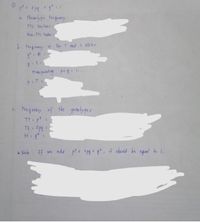2. A survey was conducted for a certain trait (the ability to roll tongue or inability to roll the tongue) in a population. The result shows that 215 of the respondents can roll their tongue and 85 cannot roll their tongue. The picture below shows a person rolling his tongue. Rolling the tongue into a tube shape is often described as a dominant trait. If the dominant allele is represented by R (can roll tongue) and r represents the recessive allele, calculate the phenotypic frequencies, allele frequencies, the expected numbers of the three genotypic classes and the expected numbers of the two phenotypic classes (assuming random mating). Using chi-square test, determine whether or not this population is in Hardy-Weinberg equilibrium. REMEMBER: Genotype Phenotype HWE term RR and Rr Can rolI tongue D2 and 2ng
Genetic Variation
Genetic variation refers to the variation in the genome sequences between individual organisms of a species. Individual differences or population differences can both be referred to as genetic variations. It is primarily caused by mutation, but other factors such as genetic drift and sexual reproduction also play a major role.
Quantitative Genetics
Quantitative genetics is the part of genetics that deals with the continuous trait, where the expression of various genes influences the phenotypes. Thus genes are expressed together to produce a trait with continuous variability. This is unlike the classical traits or qualitative traits, where each trait is controlled by the expression of a single or very few genes to produce a discontinuous variation.


Step by step
Solved in 5 steps with 1 images

1. The ability to taste the compound PTC is controlled by a dominant allele T, while individuals homozygous for the recessive allele (t) cannot taste PTC. In a population consisting of 500 individuals, 347 are tasters and 153 are non-PTC tasters. Calculate the frequency of the T and t alleles in this population, and frequency of the genotypes.
(Please train yourself to use the Hardy-Weinberg equation.)
To present your answers, follow the format in the picture below.









